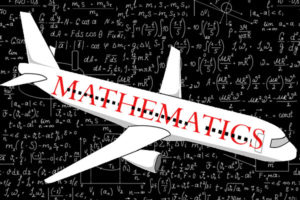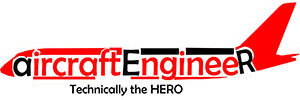EASA PART 66 module 1 – Mathematics Full notes
‘Sylabus of EASA part 66 Module 1- mathematics’

1.1 Arithmetic
Arithmetical terms and signs,
Methods of multiplication and division, Fractions and decimals,
Factors and multiples,
Weights,
Measures and conversion factors,
Ratio and proportion,
Averages and percentages,
Areas and volumes,
Squares, cubes, square and cube roots.
1.2 Algebra
(a) Evaluating simple algebraic expressions, Addition, subtraction, multiplication and division
Use of brackets, Simple algebraic fractions;
(b) Linear equations and their solutions;
Indices and powers, negative and fractional indices;
Binary and other applicable numbering systems;
Simultaneous equations and second degree equations with one unknown;
logarithms;
1.3 Geometry
(a) Simple geometrical constructions;
(b) Graphical representation;
Nature and uses of graphs,
Graphs of equations/functions;
(c) Simple trigonometry;
Trigonometrical relationships,
Use of tables and rectangular and polar coordinates.
EASA part 66 module 1 consist of basic to intermediate level of mathematics. Its best to learn the method of solving equation and practice the method. Though the level of examination is not very hard its very important to the next two modules (physics and electrical fundamentals). EASA part 66 module 2 & 3 of has few calculations.
Module 1 questions are very straight forward. But its important to remember the right mathematical equations. Questionnaire most probably contains multi choice questions (MCQ). For CAT A there are 16 mcqs and for CAT B 30 mcqs.
EASA Part 66 Module 1 questions.
Eg:
2. The specific torque loading for a bolt is 50 lbs.ins but an extension of 2 is needed to reach the bolt in addition to the 8 torque wrench. What will the actual reading?.
Option A. 60 lb.ins.
Option B. 54 lb.ins.
Option C. 40 lb.ins
We have created our presentations and book. We made it available on Aircraftengineer.info. we have collected questions from various pass papers and giving it to you. Its important that you practice these question. If you want to learn more. we have created our EASA part 66 module 1 – mathematics course.
Enjoy learning and good luck.
Arithmetic
Mathematics is the basic language of science and technology. It is an exact language that has a vocabulary and meaning for every term. Since mathematics follows definite rules and behaves in the same way every time, scientists and engineers use it as their basic tool.
Long before any metal is cut for a new aircraft design, there are literally millions of mathematical computations made. Aviation maintenance technicians perform their duties with the aid of many different tools. Like the wrench or screwdriver, mathematics is an essential tool in the maintenance, repair and fabrication of replacement parts. With this in mind, you can see why you must be competent in mathematics to an acceptable level. These notes cover the complete mathematics syllabus required to comply with the JAR-66 B1 and B2 licence level.
Arithmetic is the basic language of all mathematics and uses real, non-negative numbers. These are sometimes known as counting numbers. Only four operations are used, addition, subtraction, multiplication and division. Whilst these operations are well known to you, a review of the terms and operations used will make learning the more difficult mathematical concepts easier.
References
